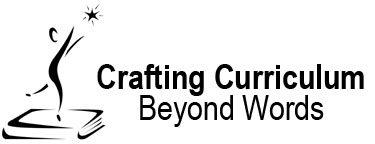 This 45-minute lesson is designed to help students explore historical events (climate change and the environmental movement) in context of a persistent issue throughout history: national sovereignty v. international law. Students will also develop skills and habits of mind associated with thinking critically about visual information. The lesson features a three-part teaching strategy. First, you’ll lead an informal class-wide conversation that culminates in an open-ended question; Second, you’ll support students as they interpret a historical photograph; Third, you’ll encourage students to begin to answer the question.
This 45-minute lesson is designed to help students explore historical events (climate change and the environmental movement) in context of a persistent issue throughout history: national sovereignty v. international law. Students will also develop skills and habits of mind associated with thinking critically about visual information. The lesson features a three-part teaching strategy. First, you’ll lead an informal class-wide conversation that culminates in an open-ended question; Second, you’ll support students as they interpret a historical photograph; Third, you’ll encourage students to begin to answer the question.
PART 1: THE CONVERSATION (10 minutes): Try initiating a seemingly impromptu conversation by asking the class: “What does everyone think of nuclear power plants… are they a great idea or a good idea or a terrible idea?” You may need to provide a brief summary of how nuclear power plants create energy (click HERE for the official explanation). Students may or may not particularly care about nuclear power plants; however, the very fact that nuclear power plants exist is the important concern for this conversation. While students share their thoughts aloud, you can negotiate responses by categorizing them into broader themes such benefits (i.e., The US has the largest nuclear electricity generation capacity and has generated more nuclear electricity than any other country) and perceived risks (i.e., perceived potential for danger, radioactive waste). Together, the class may want to create a list of benefits and contrast those benefits with the perceived risks. Remember: this is not intended to be a lengthy, formal discussion. Rather, it’s a brief grabber to gather students’ interest. Be mindful of your time and stay focused.
You might also share that today, instead of bookwork, worksheets, or a lecture, students will gather information and take notes from critically analyzing a historical photograph. Thinking deeply about this photograph should them begin to explore the balance between a what a nation wants to do in its own best interest (national sovereignty) and what other nations want it to do (international law or concern). You may want to click HERE to read a helpful one-page “Fact Sheet” from the United Nations that discusses International Law.
As a transition from the conversation and whichever open-ended question you decide to emphasize, you should share with students that the skills they will sharpen today are essential for 21st century citizenship. You can remind students that there are, and will likely always be, people and groups who intentionally use images to influence their decision-making (i.e., how to spend money, who to vote for). You can share that today students will think about a historical photograph, using it as evidence to build a claim about an open-ended question, but
they hopefully will be able to take that authentic skill and use it to improve their lives away from school (i.e., as they encounter visual information such as advertisements and social media).
PART 2: THE HISTORICAL PHOTOGRAPH (25 minutes): Next, make available to each student a copy of the Student Handout. This is a type of data retrieval chart designed for this lesson and students are strongly encouraged to collect their thoughts on it. Explain that thinking critically about images is very different from casually glancing at them. You might want to draw students’ attention to the handout that, by careful design, concentrates their analysis toward thinking deeply and “historically.”
Once each student has a copy of the data retrieval chart, you should make available the photograph, Farm scene including a bright-red barn… You could project the photograph as a multimedia presentation slide and have students work together as a whole class. Or you could ask each student to access a digital copy of the photograph and have them work individually. This lesson plan encourages you to have students work in small groups of about four or five; however, it’s your decision how to implement the lesson.
Regardless of how you make the photograph available to students, you’ll need the Teacher Handout designed specifically for this lesson. It would be best to study the handout well before leading students through this lesson because it is a primer for the photograph that provides information and a script of talking points for skillfully guiding students in an exploration of how nations tend to deliberate national sovereignty and international law as
it relates to the environment.
After the groups have analyzed the photograph and completed the Student Handout, gather the attention of the whole class and have students from each group share their respective group’s observations, conclusions, and thoughts. Be sure to ask their thoughts about sustainable development, the use of clean energy, and the role of the government to promote those practices. Follow these questions by asking for the rationale underpinning their answers. Go out of your way to ask two or three groups to respond to other group’s findings, thus developing a conversation among the students to help everyone discover and create a meaningful understanding of international
law. Carefully negotiate students’ responses and keep this segment of the lesson focused.
For an additional activity you could ask students to connect the lesson’s persistent issue in history—the balance of national sovereignty and international law—to the practice of using solar power as a clean, renewable energy source for sustainable development. The Follow-on Handout presents students with a photograph of solar panels.
You can end this lesson by reiterating how the skills and habits of mind practiced today have tremendous value in everyday life, especially considering the amount of visual information produced and consumed on social media platforms.
